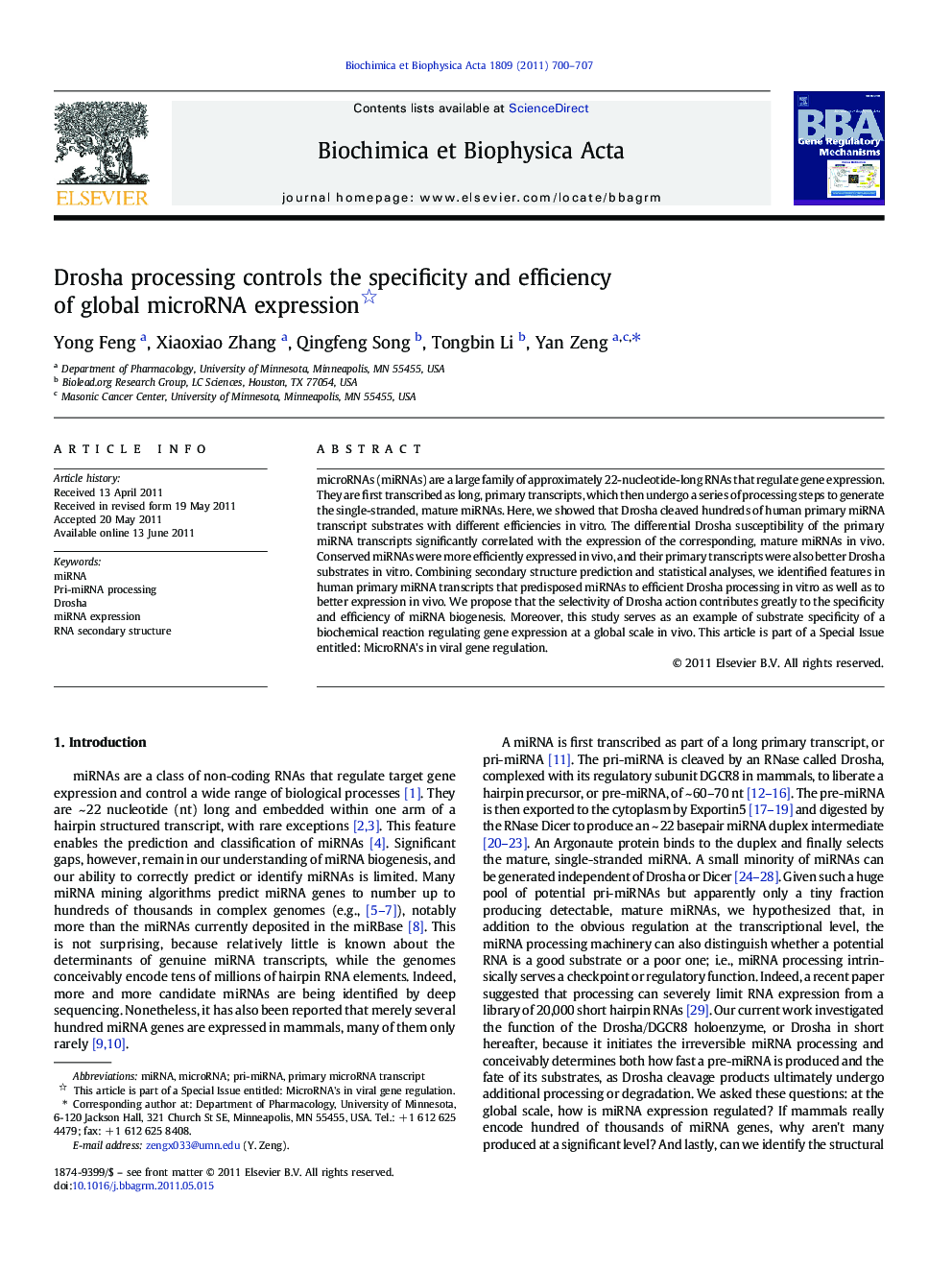| Article ID | Journal | Published Year | Pages | File Type |
|---|---|---|---|---|
| 1946612 | Biochimica et Biophysica Acta (BBA) - Gene Regulatory Mechanisms | 2011 | 8 Pages |
microRNAs (miRNAs) are a large family of approximately 22-nucleotide-long RNAs that regulate gene expression. They are first transcribed as long, primary transcripts, which then undergo a series of processing steps to generate the single-stranded, mature miRNAs. Here, we showed that Drosha cleaved hundreds of human primary miRNA transcript substrates with different efficiencies in vitro. The differential Drosha susceptibility of the primary miRNA transcripts significantly correlated with the expression of the corresponding, mature miRNAs in vivo. Conserved miRNAs were more efficiently expressed in vivo, and their primary transcripts were also better Drosha substrates in vitro. Combining secondary structure prediction and statistical analyses, we identified features in human primary miRNA transcripts that predisposed miRNAs to efficient Drosha processing in vitro as well as to better expression in vivo. We propose that the selectivity of Drosha action contributes greatly to the specificity and efficiency of miRNA biogenesis. Moreover, this study serves as an example of substrate specificity of a biochemical reaction regulating gene expression at a global scale in vivo. This article is part of a Special Issue entitled: MicroRNA's in viral gene regulation.
► Human pri-miRNAs are processed by Drosha with different efficiencies in vitro. ► Pri-miRNA processing efficiencies correlate with miRNA expression levels in vivo. ► Conserved pri-miRNAs are better cleaved by Drosha. ► Later-annotated miRNAs tend to be poorer Drosha substrates. ► Structural features in pri-miRNAs predict Drosha processing and miRNA expression.
